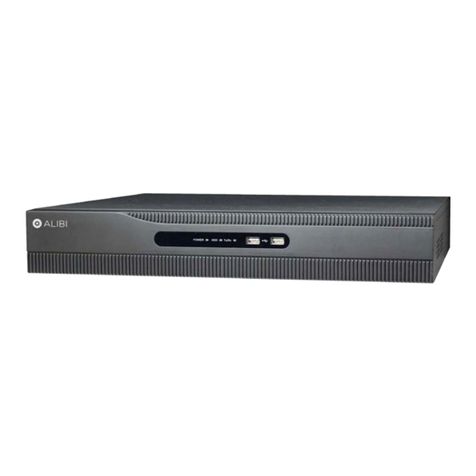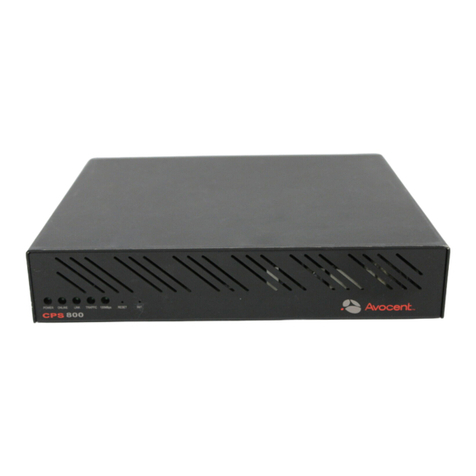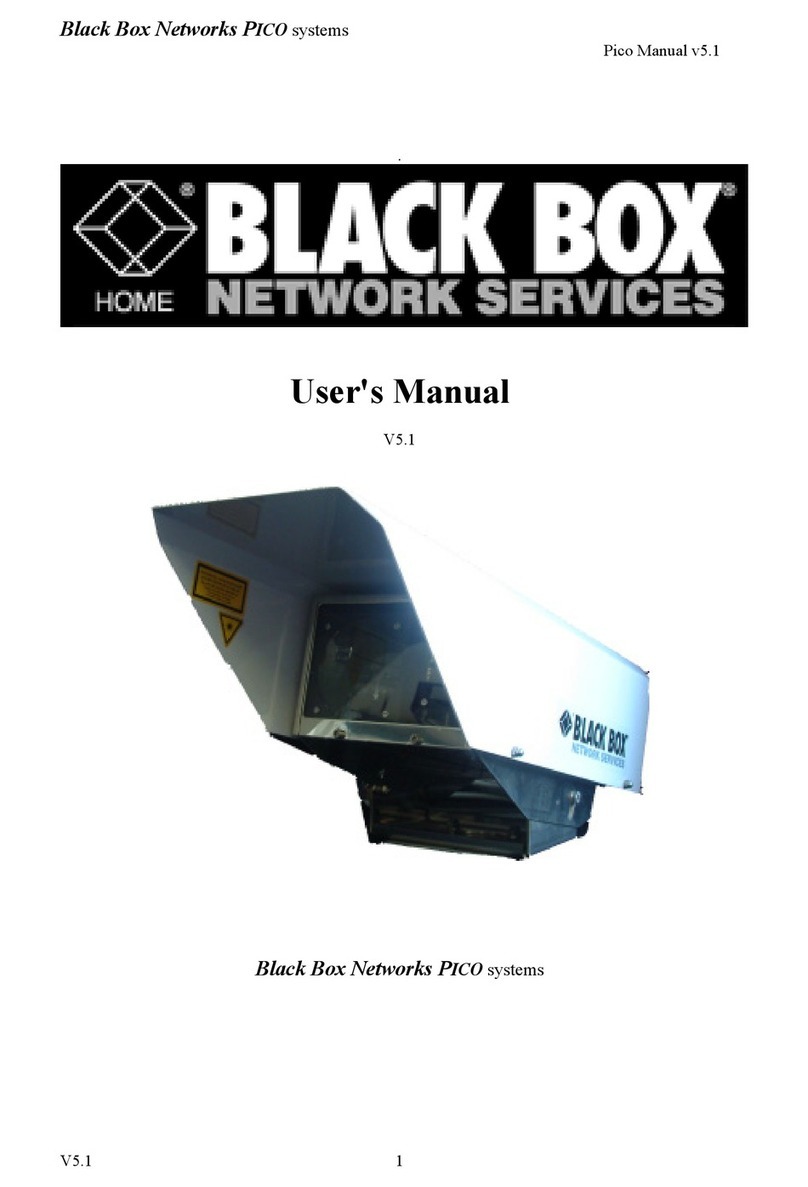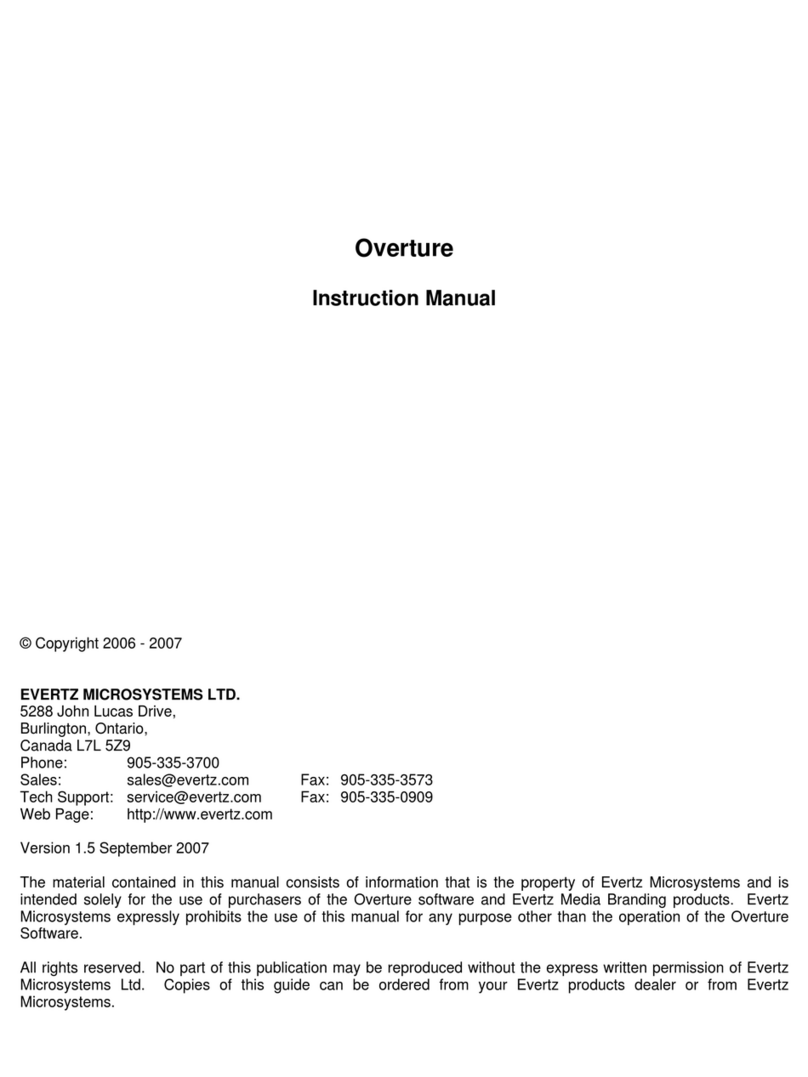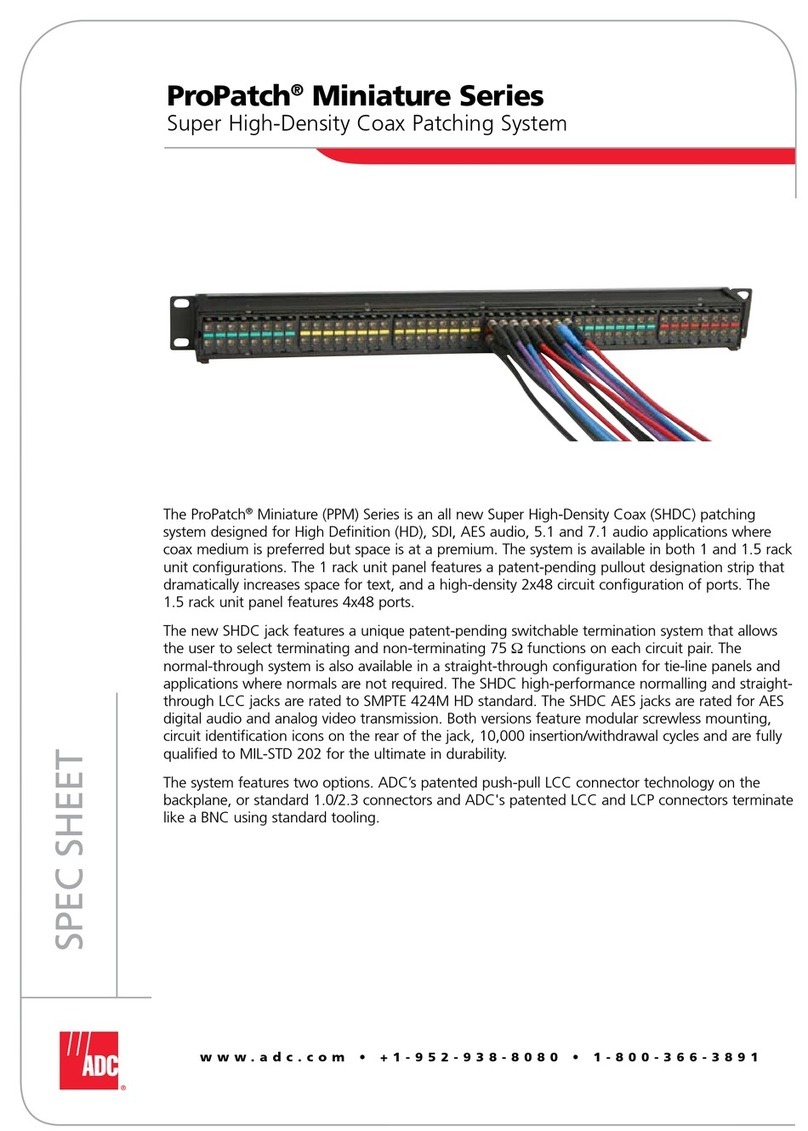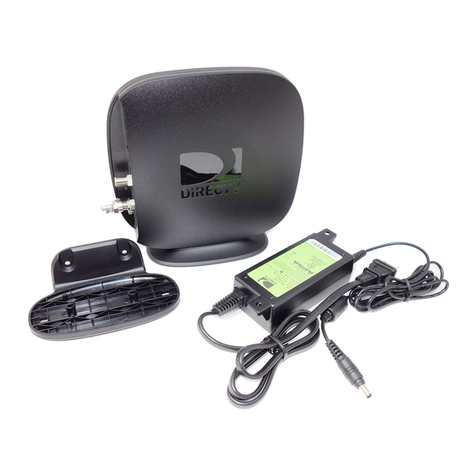GEMAC IPE1000-U User manual

Phone: +49 371 33 77 - 0
Fax:: +49 371 33 77 272
Internet: www.gemac-chemnitz.de
Email: interpolation@gemac-chemnitz.de
sales@gemac-chemnitz.de
Gesellschaft für
Mikroelektronikanwendung Chemnitz mbH
Zwickauer Straße 227
D-09116 Chemnitz, Germany
Date: 25.05.05 Page 1 of 13
Title:
User manual - IPE1000-U
Name of Document:
46500-HB-1-4-E-IPE1000-U.pdf
Programmable Interpolation Unit
IPE1000-U
User Manual

Phone: +49 371 33 77 - 0
Fax:: +49 371 33 77 272
Internet: www.gemac-chemnitz.de
Email: interpolation@gemac-chemnitz.de
sales@gemac-chemnitz.de
Gesellschaft für
Mikroelektronikanwendung Chemnitz mbH
Zwickauer Straße 227
D-09116 Chemnitz, Germany
Date: 25.05.05 Page 2 of 13
Title:
User manual - IPE1000-U
Name of Document:
46500-HB-1-4-E-IPE1000-U.pdf
Revision History
Date Revision Changing
16.12.2003 1.0 First version
22.06.2004 1.1 Input connector pinning
02.07.2004 1.2 Output signal description, Soldering Jumper J10
11.03.2005 1.3 Several changings
25.05.2005 1.4 Dimensions added
© Copyright 2005 GEMAC mbH
This document is subject to alterations without any notice.
We constantly work to further develop our products. We reserve any changes of scope of delivery in shape,
equipment and technology to ourselves. No claim can be the details, illustrations and descriptions in this
document. Any kind of duplication, reprocessing and translation of this document as well as excerpts from it
requires the written permission of the GEMAC mbH.
All rights according to the copyright remain explicitly reserved for GEMAC mbH.

Phone: +49 371 33 77 - 0
Fax:: +49 371 33 77 272
Internet: www.gemac-chemnitz.de
Email: interpolation@gemac-chemnitz.de
sales@gemac-chemnitz.de
Gesellschaft für
Mikroelektronikanwendung Chemnitz mbH
Zwickauer Straße 227
D-09116 Chemnitz, Germany
Date: 25.05.05 Page 3 of 13
Title:
User manual - IPE1000-U
Name of Document:
46500-HB-1-4-E-IPE1000-U.pdf
1 Contents
1 CONTENTS ..........................................................................................................................................3
2 OVERVIEW...........................................................................................................................................4
3 INPUT SIGNALS...................................................................................................................................5
3.1 CONNECTION OF A MEASURING SYSTEM .............................................................................................5
3.2 SIGNAL CORRECTION ........................................................................................................................6
3.3 REFERENCE SIGNAL..........................................................................................................................6
4 OUTPUT SIGNALS...............................................................................................................................7
4.1 OUTPUT SIGNALS RS422..................................................................................................................7
4.2 ERROR SIGNAL.................................................................................................................................7
5 INTERPOLATION RATE.......................................................................................................................7
5.1 INTERVAL TIME / MAXIMUM INPUT FREQUENCY....................................................................................8
5.2 GLITCH FILTER .................................................................................................................................8
6 SPECIFICATIONS ................................................................................................................................9
7 CONFIGURATION OF THE SWITCHES AND CONNECTORS ........................................................... 10
7.1 EXTRUDED ALUMINIUM HOUSING IP20.............................................................................................10
7.2 DIE-CAST BOX HOUSING IP65.........................................................................................................10
7.3 DIL-SWITCH ..................................................................................................................................10
7.4 INTERPOLATION RATE .....................................................................................................................10
7.5 MINIMUM EDGE DISTANCE AT THE OUTPUTS......................................................................................11
7.6 SERVICE CONNECTOR SPI ..............................................................................................................11
7.7 LED..............................................................................................................................................11
8 COMPONENT MOUNTING DIAGRAM................................................................................................ 12
8.1 SOLDERING JUMPER SOLDER SIDE...................................................................................................12
8.2 DIMENSIONS...................................................................................................................................13

Phone: +49 371 33 77 - 0
Fax:: +49 371 33 77 272
Internet: www.gemac-chemnitz.de
Email: interpolation@gemac-chemnitz.de
sales@gemac-chemnitz.de
Gesellschaft für
Mikroelektronikanwendung Chemnitz mbH
Zwickauer Straße 227
D-09116 Chemnitz, Germany
Date: 25.05.05 Page 4 of 13
Title:
User manual - IPE1000-U
Name of Document:
46500-HB-1-4-E-IPE1000-U.pdf
2 Overview
The programmable interpolation unit IPE1000-U has been designed for connection to incremental position
and angle measuring systems with sine-shaped output signals with a 90°phase shift. It can be operated at a
large number of transducer systems working according to the most varied measuring principles. With a
maximum interpolation rate of 1000 the IPE1000-U is capable to split the input signal period into up to 1000
segments. An RS422 interface for square wave outputs is available.
Proprietary automatic gain and offset control, as well as the possibility of a analogue phase correction of the
internal GC-IP1000 ensure a high measuring precision under industrial conditions.
Block diagram
GC-IP1000 RS422-interface
Sin
Cos
Ref
Fig. 1 Block diagram

Phone: +49 371 33 77 - 0
Fax:: +49 371 33 77 272
Internet: www.gemac-chemnitz.de
Email: interpolation@gemac-chemnitz.de
sales@gemac-chemnitz.de
Gesellschaft für
Mikroelektronikanwendung Chemnitz mbH
Zwickauer Straße 227
D-09116 Chemnitz, Germany
Date: 25.05.05 Page 5 of 13
Title:
User manual - IPE1000-U
Name of Document:
46500-HB-1-4-E-IPE1000-U.pdf
3 Input Signals
The input signals of the IPE1000-U are analogue voltages (sine/cosine), which have a sine-shaped
dependency on the measured value (position or angle). The phase shift between those two analogue
voltages is 90°, related to one period of the scale. A third input signal serves the zero or reference point of
the scale as a reference signal for determining. All the three input signals are processed as differential or
single ended signals. Another version of the device with current inputs is also available (IPE1000-I).
0 90 180 270 360 450 540 630 720
sin
-sin
cos
-cos
0,5Vpp
0 90 180 270 360 450 540 630 720
sin
cos
1Vpp
Fig. 2 Input signals differential Fig. 3 Input signals single-ended
3.1 Connection of a Measuring System
SinP
SinN
difference
signal
Sin =
SinP-SinN
Udiff Peak to Peak
difference signal Cos = CosP-
CosN
Udiff Peak to Peak
CosP
CosN
90°
phase
shift
angle 0°
Fig. 4
G1 G0 Gain
(nominal) Input voltage for differential
input 1) Input voltage UDiff
(nominal) Input voltage range for
UDiff
maximum
signal offset
open closed 19.5 50mVpp 100mVpp 80 mVpp ... 120 mVpp ±10mV
open open 16.25 60mVpp 120mVpp 96 mVpp ... 144 mVpp ±12mV
closed closed 13.45 72mVpp 145mVpp 145 mVpp ... 174 mVpp ±14.5mV
closed open 1.95 2) 0.5Vpp 1Vpp 0.8Vpp ... 1.2Vpp ±100mV
1) at each of the inputs SINP, SINN, COSP, COSN
2) Default value
See also chapter 8.1

Phone: +49 371 33 77 - 0
Fax:: +49 371 33 77 272
Internet: www.gemac-chemnitz.de
Email: interpolation@gemac-chemnitz.de
sales@gemac-chemnitz.de
Gesellschaft für
Mikroelektronikanwendung Chemnitz mbH
Zwickauer Straße 227
D-09116 Chemnitz, Germany
Date: 25.05.05 Page 6 of 13
Title:
User manual - IPE1000-U
Name of Document:
46500-HB-1-4-E-IPE1000-U.pdf
3.2 Signal Correction
The input signals are subject to the internal automatic gain and offset control of the IP1000, which is
patented by GEMAC. The amplitude controller is specified for a control range of ±20% of nominal input
voltage. The offset of the external signals must not exceed a value of ±10% of nominal input voltage. The
phase shift of the input signals can be adjusted statically by the internal potentiometer in a range of ±6° or
±12°via SPI. There are two measuring points (MP1 and MP2) for testing the signals. The signal at each of
those measuring points should have an amplitude of 2.0VPP and an offset of 2.275V refering to Ground.
For achieving the best interpolation performance, the gain-offset-controller needs approximately 20 signal
periods for reaching a steady state. Until this time, the input signal frequency must not exceed 50% of the
specified maximum signal frequency (please refer to chapter 5.1).
For reaching the highest accuracy of the gain-offset regulation the phase should adjust. This will be very
important if high interpolation rates are used.
3.3 Reference Signal
A third output of the measuring system - typically called reference, index point or zero point signal – will be
considered to be activated, if the difference of the signals at the REFP and REFN pins becomes bigger than
the positive hysteresis voltage VRPH and will be considered to be deactivated if this voltage becomes smaller
than the negative hysteresis voltage VRPL.
REFN
REFP
respectively: VRP = REFP - REFN
0V
inactive
active
inactive
VRPH
VRPL
Fig. 5
URPL (typ.) = -30mV
URPH (typ.) = +30mV
If a sensor without reference signals is used, defined levels on pins REFP and REFN are necessary to set
the index point always active or always inactive.
Reference signal at the output
active in each period Reference signal at the output
inactive
LJ 19: b-c LJ 19: a-b
LJ18: open LJ18: open
R11: placed R11: placed

Phone: +49 371 33 77 - 0
Fax:: +49 371 33 77 272
Internet: www.gemac-chemnitz.de
Email: interpolation@gemac-chemnitz.de
Gesellschaft für
Mikroelektronikanwendung Chemnitz mbH
Zwickauer Straße 227
D-09116 Chemnitz, Germany Date: 25.05.05 Page 7 of 13
Title:
User manual - IPE1000-U
Name of Document:
46500-HB-1-4-E-IPE1000-U.pdf
4 Output Signals
4.1 Output Signals RS422
The output signals are phase shifted square wave sequences (known by incremental measuring
transducers). They can be counted in a single or quadruple way. A synchronous reference pulse will be
generated when the angle of 0° (refer also to Fig. 3) is passed through and when the analogue differential
input voltage between REFP and REFN exceeds the positive comparator hysteresis level. If the differential
input voltage is permanently above this level, the reference pulse will be generated once during every signal
period.
≥tpp
A
B
OREF
tpp: Minimum interval time
edge distance
/A
/B
Fig. 6 Output signals
For generating a reference pulse at the output and the exact assignment of the signals A, B and OREF it is
necessary to pass a Sin/Cos-period (for finding the zero degree angle). That status will be signalized by a
green Valid-LED (LED 3, looked status). In the case of an error the red Error-LED (LED 2) is switched on
and the green Valid-LED is switched off. An external reset pulse with a minimum length of 3µs will restart
the GC-IP1000. To get the locked status again a further Sin/Cos-period is needed.
In case of selected interpolation rates 125 and 250-fold the assignment of A, B and OREF can not be
guaranteed.
4.2 Error Signal
An error signal will be generated if the input signals are plausible no longer. The error signal will also be
generated if the input frequency is so high that the square-wave signals are unable to follow, and/or when
the maximum input frequency is exceeded.
If the error signal was activated, and/or if one of the error bits was set in the result register, the present
measuring result and all the following results would have to be discarded. Following elimination of the cause
of the error and a reset of the error bit, the reference point has to be passed by for absolute value
measurements once again!
5 Interpolation Rate
The interpolation rate can be set at 1000, 800, 500, 400, 250, 200, 125 and 100. The interpolation rate as
defined for the purposes of this application is the number of increments into which one sine period of the
input signal is divided. This also corresponds to the number of edge changes on the A/B output signals per
input signal period. This means that the number of square-wave periods at the Aand Boutputs totals 1/4 of
the interpolation rate per input signal period.
In the case that a standard interpolation counter or quadrature decoder is connected to the A/B outputs, this
has to work in "quadruple evaluation" mode in order to achieve the full interpolation rate.

Phone: +49 371 33 77 - 0
Fax:: +49 371 33 77 272
Internet: www.gemac-chemnitz.de
Email: interpolation@gemac-chemnitz.de
Gesellschaft für
Mikroelektronikanwendung Chemnitz mbH
Zwickauer Straße 227
D-09116 Chemnitz, Germany Date: 25.05.05 Page 8 of 13
Title:
User manual - IPE1000-U
Name of Document:
46500-HB-1-4-E-IPE1000-U.pdf
5.1 Interval Time / Maximum Input Frequency
The interval time (IT) respectively the minimum edge distance (tPP) at the output signals can be adjusted
using the same DIL-Switch as for the interpolation rate. This is possible from 1/fosc to 128/fosc in binary steps.
The following table shows the maximum input frequencies under consideration of the interval times.
Clock frequency example
fOSZ = 22MHz fmaxCNT = 110kHz
IR IT tpp fmax IR IT tpp fmax IR IT tpp fmax IR IT tpp fmax
1 45ns 19k 1 45ns 25k 1 45ns 40k 1 45ns 50k
2 91ns 10k 2 91ns 12.5k 2 91ns 20k 2 91ns 25k
4 181ns 5k 4 181ns 6.2k 4 181ns 10k 4 181ns 12.5k
8 363ns 2.5k 8 363ns 3.1k 8 363ns 5k 8 363ns 6.2k
16 727ns 1.2k 16 727ns 1.5k 16 727ns 2.5k 16 727ns 3.1k
32 1.4µs 600 32 1.4µs 775 32 1.4µs 1.2k 32 1.4µs 1.5k
64 2.9µs 300 64 2.9µs 380 64 2.9µs 600 64 2.9µs 775
1000
128 5.8µs 150
800
128 5.8µs 190
500
128 5.8µs 300
400
128 5.8µs 380
1 45ns 80k 1 45ns 100k 1 45ns 110k 1 45ns 110k
2 91ns 40k 2 91ns 50k 2 91ns 80k 2 91ns 100k
4 181ns 20k 4 181ns 25k 4 181ns 40k 4 181ns 50k
8 363ns 10k 8 363ns 12.5k 8 363ns 20k 8 363ns 25k
16 727ns 5k 16 727ns 6.2k 16 727ns 10k 16 727ns 12.5k
32 1.4µs 2.5k 32 1.4µs 3.1k 32 1.4µs 5k 32 1.4µs 6.2k
64 2.9µs 1.2k 64 2.9µs 1.5k 64 2.9µs 2.5k 64 2.9µs 3.1k
250
128 5.8µs 600
200
128 5.8µs 775
125
128 5.8µs 1.2k
100
128 5.8µs 1.5k
These values apply on condition of an adjusted phase between the input signals and a steady state of the
internal gain-offset-controller. Until this time, the input frequency must not exceed 50% of the specified
maximum frequency.
5.2 Glitch Filter
In order to avoid permanent toggling of the downstream counters as a result of analogue noise of the input
signals while the measuring system is in standstill, a digital filter can be optionally activated for the square-
wave outputs (pin / bit GFE). In such a case, the minimum edge distance at the output (tpp) is then
automatically set at 1024/fosc while the measuring system is in standstill or at smaller input frequencies.
Note that in the switching range to the automatic activation / deactivation of this filter, the A/B output signals
are not speed-proportional in each case!
LJ10 - jumper for glitch filter description
open glitch filter active
closed glitch filter inactive
For finding the jumper position please refer to chapter 8.

Phone: +49 371 33 77 - 0
Fax:: +49 371 33 77 272
Internet: www.gemac-chemnitz.de
Email: interpolation@gemac-chemnitz.de
Gesellschaft für
Mikroelektronikanwendung Chemnitz mbH
Zwickauer Straße 227
D-09116 Chemnitz, Germany Date: 25.05.05 Page 9 of 13
Title:
User manual - IPE1000-U
Name of Document:
46500-HB-1-4-E-IPE1000-U.pdf
6 Specifications
Recommended Operating Conditions MIN NOM MAX Unit
Supply voltages 4.75 5.0 5.25 V
Supply current 130 mA
Operating case temperature -20 85 °C
Analogue Input Specifications MIN NOM MAX Unit
Input frequency range SIINP,SINN,COSP,COSN 400 kHz
Phase offset between SIN and COS 90 °
Peak to peak input voltage SINN ⇔SINP / COSN ⇔COSP 0.8 1.0 1.2 Vpp
Phase deviation ±8±10 ±12 °
Oscillator frequency 20 MHz
Reset Specifications MIN NOM MAX Unit
Reset impulse length 3 µs
Interpolation MIN NOM MAX Unit
Input frequency range 0 fosz / 96 kHz
Automatic gain control range ±20%
Automatic offset control range ±10%
related to nom.
amplitude
Interpolation Rates 20 / 25 / 40 / 50 / 80 / 100 / 160 / 200
Minimum interval time A/B - Signals 1 / fosz 128 / fosz ns
Interpolation accuracy ±0.6 ±1Inc.
Propagation delay counter 90 / fosz ns
Propagation delay square-wave outputs (A/B/OREF)122 / fosz ns
Other characteristics Extruded aluminium
housing
die-cast box housing
Degree of protection (depends on the housing) IP20 IP65
Connector Sub-D 15 pin Round plug 9- and 12pin
Dimensions 55mm x 80mm x 20mm 100mm x 66mm x 50mm

Phone: +49 371 33 77 - 0
Fax:: +49 371 33 77 272
Internet: www.gemac-chemnitz.de
Email: interpolation@gemac-chemnitz.de
Gesellschaft für
Mikroelektronikanwendung Chemnitz mbH
Zwickauer Straße 227
D-09116 Chemnitz, Germany Date: 25.05.05 Page 10 of 13
Title:
User manual - IPE1000-U
Name of Document:
46500-HB-1-4-E-IPE1000-U.pdf
7 Configuration of the Switches and Connectors
It is necessary to open the unit for configuration. This can be done by open the screws at both sides. The
cover can be lift off now.
7.1 Extruded Aluminium Housing IP20
Signal input - Sub-D 15-pin female Signal output - Sub-D 15-pin male
Pin No. Signal Pin No. Signal
1 SINP 1 AP
2 0VDC 2 0VDC
3 COSP 3 BP
4 +5VDC 4 +5VDC
5 5 EP
6 6
7 REFN 7 RN
8 8 NERR
9 SINN 9 AN
10 0VDC 10 0VDC
11 COSN 11 BN
12 +5VDC 12 +5VDC
13 13 ext. trigger
14 REFP 14 RP
15 15 EN
7.2 Die-Cast Box Housing IP65
Round plug 9-pin (Signal input) Round plug 12-pin (Signal output)
Pin No. Signal Pin No. Signal
1 SINN 1 AN
2 SINP 2 AP
3 +5VDC 3 BN
4 0VDC 4 BP
5 COSN 5 RN
6 COSP 6 RP
7 REFN 7 EN
8 REFP 8 EP
9 PE 9 +5VDC
10 0VDC
11 external Trigger
12 n.c.
7.3 DIL-Switch
Switch No. Signal Name On Off
1 IR0
2 IR1
3 IR2
Interpolation rate See table
Interpolation rate
4 IT0
5 IT1
6 IT2
Minimum edge distance at the
outputs See table edge distance
7.4 Interpolation Rate
IR2 IR1 IR0 Interpolation rate
OFF ON ON 1000
ON ON ON 800
OFF ON OFF 500
ON ON OFF 400
OFF OFF ON 250
ON OFF ON 200
OFF OFF OFF 125
ON OFF OFF 100

Phone: +49 371 33 77 - 0
Fax:: +49 371 33 77 272
Internet: www.gemac-chemnitz.de
Email: interpolation@gemac-chemnitz.de
Gesellschaft für
Mikroelektronikanwendung Chemnitz mbH
Zwickauer Straße 227
D-09116 Chemnitz, Germany Date: 25.05.05 Page 11 of 13
Title:
User manual - IPE1000-U
Name of Document:
46500-HB-1-4-E-IPE1000-U.pdf
7.5 Minimum Edge Distance at the Outputs
IT2 IT1 IT0 Interval time 1/fosz
ON ON ON 1
ON ON OFF 2
ON OFF ON 4
ON OFF OFF 8
OFF ON ON 16
OFF ON OFF 32
OFF OFF ON 64
OFF OFF OFF 128
7.6 Service Connector SPI
Pin No. Signal
1 SDO
2 SDI
3 SCLK
4 SCEN
5 NERR
6 NRES
7 0VDC
8 0VDC
9 +5VDC
10 +5VDC
7.7 LED
LED 1 Power supply
LED 2 Error LED see chapter4
LED 3 Valid LED see chapter4
LED 4 Reset

Phone: +49 371 33 77 - 0
Fax:: +49 371 33 77 272
Internet: www.gemac-chemnitz.de
Email: interpolation@gemac-chemnitz.de
Gesellschaft für
Mikroelektronikanwendung Chemnitz mbH
Zwickauer Straße 227
D-09116 Chemnitz, Germany Date: 25.05.05 Page 12 of 13
Title:
User manual - IPE1000-U
Name of Document:
46500-HB-1-4-E-IPE1000-U.pdf
8 Component Mounting Diagram
8.1 Soldering Jumper Solder Side
Jumper for gain adjustment Signal
LJ11 G0
LJ12 G1
G0 G1 Gain
close open 19,5
open open 16,2
close close 13,4
open close 1,95 (default)
Jumper LJ10 for
glitch filter activation Description
Open glitch filter active
closed glitch filter inactive

Phone: +49 371 33 77 - 0
Fax:: +49 371 33 77 272
Internet: www.gemac-chemnitz.de
Email: interpolation@gemac-chemnitz.de
Gesellschaft für
Mikroelektronikanwendung Chemnitz mbH
Zwickauer Straße 227
D-09116 Chemnitz, Germany Date: 25.05.05 Page 13 of 13
Title:
User manual - IPE1000-U
Name of Document:
46500-HB-1-4-E-IPE1000-U.pdf
8.2 Dimensions
10,00
120,00
55,00
45,00
4,5020,00
All dimensions in mm.
Table of contents
Popular Network Hardware manuals by other brands
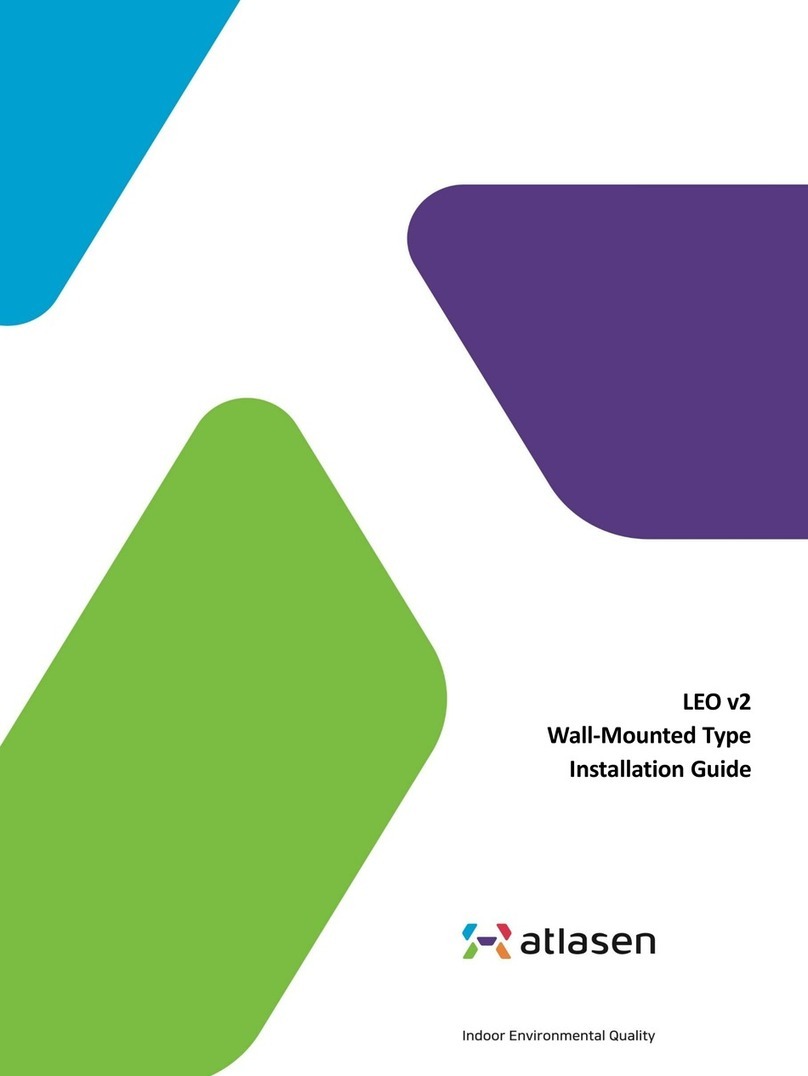
Atlasen
Atlasen LEO v2 installation guide

NetScreen Technologies
NetScreen Technologies NetScreen-25 Getting started guide
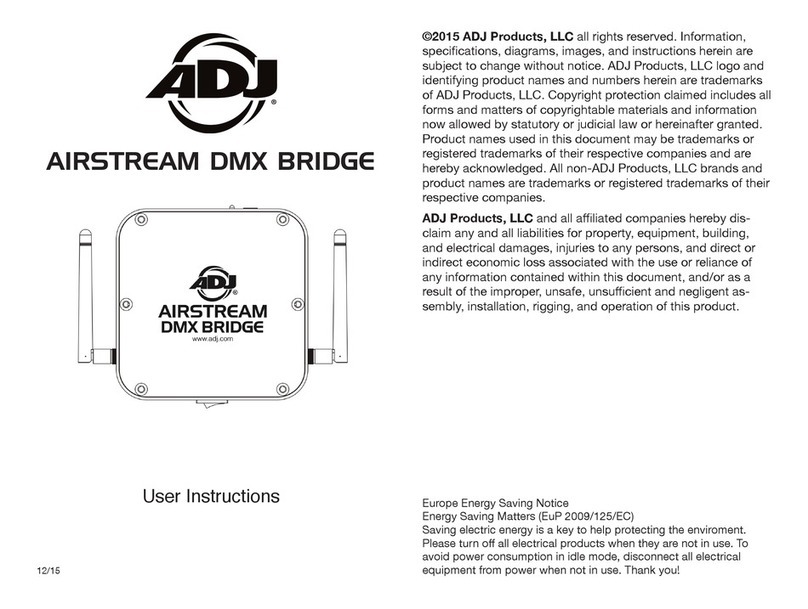
ADJ
ADJ AIRSTREAM DMX BRIDGE User instructions
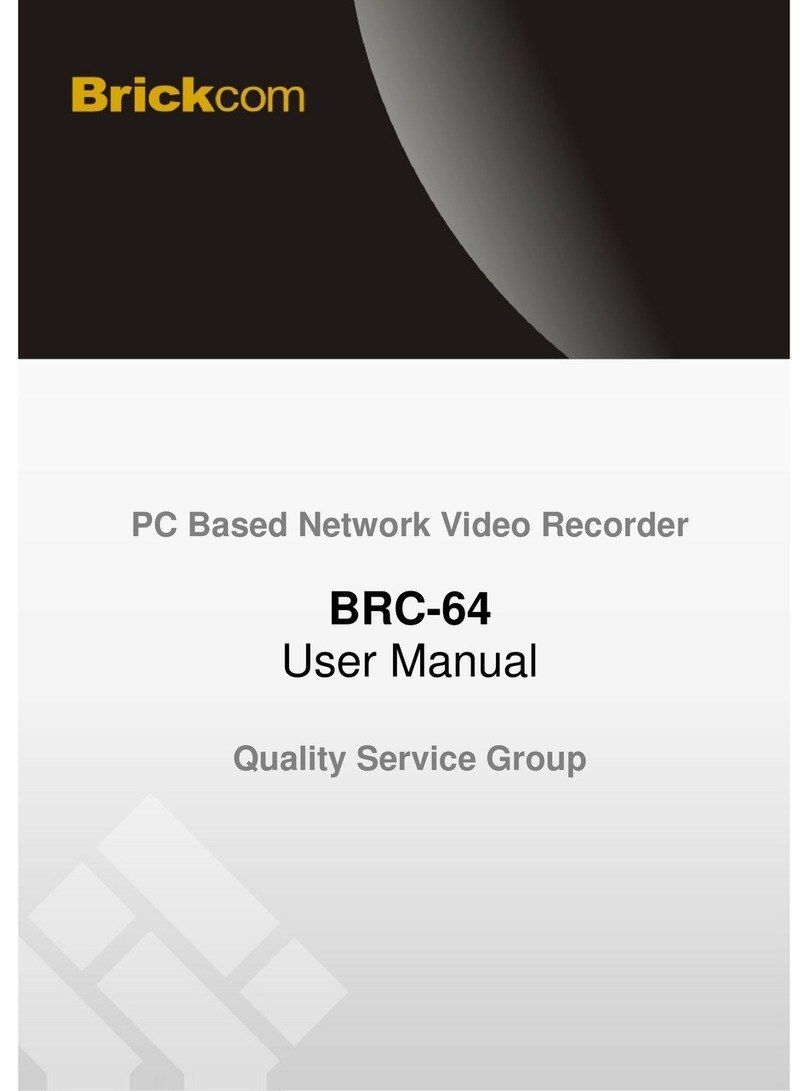
Brickcom
Brickcom BRC-64 user manual
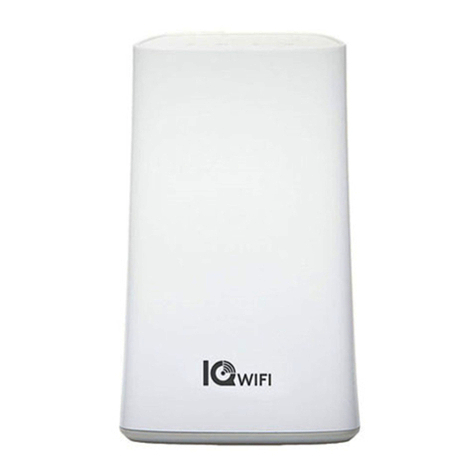
Johnson Controls
Johnson Controls IQ WIFI installation manual
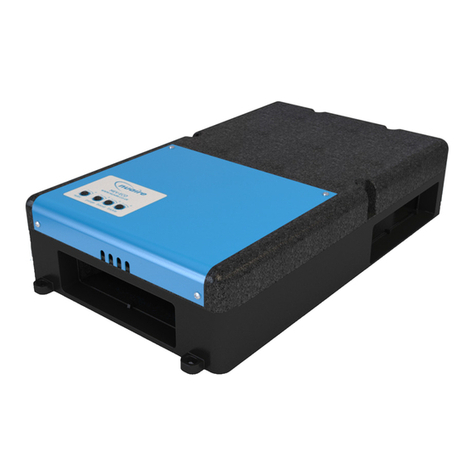
NuAire
NuAire MEV-ECO-H installation manual
